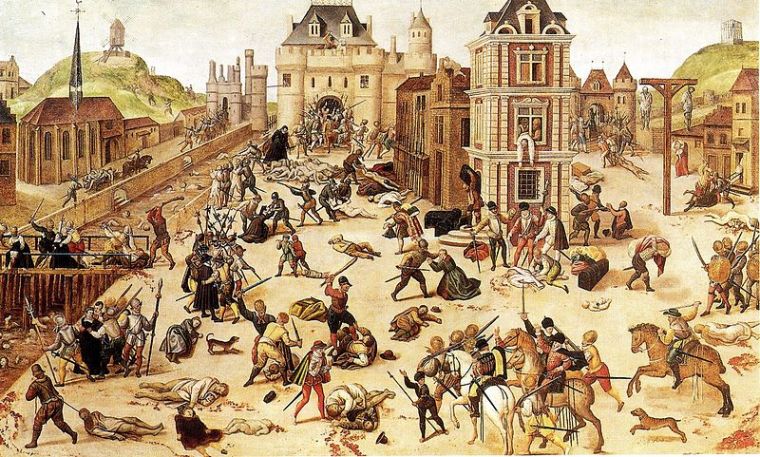St Bartholomew's Day 1572: When French Protestants suffered their most deadly blow
One of the saddest aspects of the Reformation, whose beginning 500 years ago in 1517 we remember on October 31, was the violence it provoked. As well as being a religious and theological revival, the Reformation challenged the entrenched power of the Church and the state – and the passions that arose all too often found an outlet in shocking brutality.

On this day in 1572 the Protestants in France were the ones to suffer. The St Bartholomew's Day Massacre was the culmination of political and religious rivalries played out against the background of rising tensions between Calvinist Huguenots and Catholics.
Many believe it to have been instigated by Queen Catherine de' Medici, the mother of King Charles IX, who feared the rising power of the Huguenots. Just days before, the King's sister Marguerite de Valois had married the Protestant Henry of Navarre, and the Huguenot faith was spreading throughout the country.
The king ordered the murder of Huguenot aristocratic leaders including Admiral Gaspard de Coligny, their chief. He was killed in his bedroom in the early morning and the corpse was thrown out of the window, where it was mutilated and dragged through the streets of Paris by the crowd. As the killer, the Duc de Guise, walked away he was heard to say, 'It is the King's command.'
Other Huguenot leaders were killed as they woke, unable to defend themselves. Henri of Navarre and his brother renounced their faith to save their lives, though they resumed it once they had escaped.
The murder touched off a terrible wave of killing that spread throughout France as Catholics turned on their Protestant neighbours. In Paris, around 3,000 men, women and children died. At least another 8,000 died in other cities around the country.
A dispatch from a Genevan diplomatic dispatch read: 'The whole of France is bathed in the blood of innocent people and covered with dead bodies. The air is filled with the cries and groans of nobles and commoners, women and children, slaughtered by the hundreds without mercy.'
The terrible cruelties broke the rising influence of the Huguenots and ensured France would remain a Catholic country. Pope Gregory XIII had a special medal struck to commemorate the events and ordered a fresco by Vasari depicting the death of Admiral Coligny. Philip II of Spain is reported to have laughed for the only time in his life.
But they also helped provide theologians with justifications for rebellion against wicked rulers; if they governed tyrannically they forfeited their right to rule. This would have consequences in the English Civil Wars and the American Revolution.
The French wars of religion came to an end when Henri of Navarre succeeded to the throne. He abjured his Protestant faith and became a Catholic, reportedly saying 'Paris is well worth a mass'. He also promulgated the Edict of Nantes, in 1598, which brought religious tolerance to the country and allowed Huguenots to worship freely again. But less than a hundred years later this was revoked by King Louis XIV, who wanted a purely Catholic country. Hundreds of thousands left the country, many of them skilled craftspeople France could not afford to lose. Large numbers fled to England where they were welcomed as fellow-Protestants in the first modern wave of refugees. They provided a huge boost to manufacturing and amply repayed the country's hospitality.











